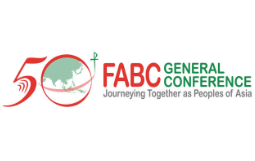Why Praise and Worship music is not suitable for liturgy
Why Praise and Worship music is not suitable for liturgy
Mar 14, 2014
By SHANTI MICHAEL
I will admit that the title of this article has been deliberately sensationalized to encourage the reader to read on in either interest or indignation.Before I continue, let me clarify my position. I am an advocate of using a wide breadth of musical styles in the liturgy. The ‘Worship Wars’ is a discussion that has been raging on for decades amongst Catholics worldwide, and there are too many specific details to be able to cover them in this article. Many intelligent thoughts and arguments from both sides of the table can be found online, though some browsing will need to be done to weed out the superficial from the substantial. In this article, I intend to specifically address the genre of Praise and Worship music.
First, I would like to emphasize the difference between Contemporary Liturgical Music, and Praise and Worship (P&W) music as genres. There are many beautiful contemporary songs and hymns that are very suitable for the Roman Catholic Liturgy. Many people seem to be under the impression that those of us who do not wish to see Praise and Worship music in the Liturgy want to just sing chant, celebrate Mass in Latin, and sing ‘boring’ old hymns all the time. This is far from the truth.
To debunk this myth, first let’s look at Praise and Worship music as a musical genre. This genre of music arose in the twentieth century from the Western Evangelical Protestantism charismatic movement. The charismatic movement was soon adopted by many other denominations, including the Catholic Church. While the initial reaction to the Catholic Charismatic Renewal was cautious, it is now widely acknowledged that it has played a significant role in the re-evangelization in the Catholic Church, and it is a wonderful contribution to Catholic faith life.
Problems arose however, when the music from the Charismatic Renewal began taking over in the Roman Catholic Liturgy. The Catholic Church was already seeing a big loss in our traditional repertoire with the lack of choral music, the replacement of singing Propers with hymns, and the disappearance of chant.
We must remember that Praise and Worship music was written for services where a majority of the service consisted of extended periods of singing intersected with preaching, with very little liturgical elements. This style of worship was also predominantly influenced by Pentecostal and evangelical theologies.
This genre of music also requires specific elements such as a Worship Leader, most of the time a full contemporary band, and backup singers or a choir. The subgenres of Praise and Worship music can consist of anything from Country to Alternative Rock to Gospel. The language of the lyrics of Praise and Worship Music is also very personal, and very repetitive phrases are often used to reinforce the message, similar to the choruses of popular music from various genres of music.
The most severe criticism that has been argued is that the lyrics of this genre are ‘banal’ and ‘lacking in depth’, and that the melodies are goofy, uninspired, and have bad harmonic structure. This kind of criticism to me however, leans towards more to personal taste of music rather than a proper examination of the functionality of the music in the Liturgy.
When it comes to incorporating music into Catholic Liturgy, one must take into account that it needs to be musically accessible to the congregation, particularly if they are to actively participate in singing. The genres mentioned above often tend to have a complicated rhythmic structure and melodies have too wide a range, and the ‘band’ element no longer accompanies and supports the singing, which is supposed to be the primary form of music in the Liturgy.
All of the above point out the different functions that Praise and Worship Music serves and why it is not necessarily easily harmonious with the Roman Catholic Liturgy. Our liturgy is a ritualistic celebration that traces back its roots to early Jewish traditions. Every action that takes place has a prescribed liturgical function, which centres on the Paschal Mystery of our Lord Jesus Christ. Beginning with the Psalms, the history of liturgical music has been rooted in the Word. The Roman Liturgy is one that has been carefully constructed and shaped over time, with readings and Propers specific to each day. When we take any genre of music, and incorporate it into the liturgy, it must be selected with the utmost sensitivity to this.
And it should not be selected for the sole purpose of attracting a particular age demographic. Too often have we heard the excuse “We need cool and lively music to attract young people to the Church.” Putting aside the fact that there should be more important elements that should be employed to attract people to the church, as a relatively young person myself, I can say with some conviction that young people are attracted to GOOD music, regardless of genre. We live in an age where our senses are overloaded with all types of music from many sources other than the radio, such as Youtube, Itunes, Spotify etc. The problem has primarily been the quality of the music rather than the genre.
While we are very lucky to have such willing volunteers to lead the congregation at Mass, very little liturgical, historical, pastoral and spiritual formation/training is provided to these cantors and musicians. I remember going for Mass to many churches as a child and listening to traditional music being poorly executed by a well intentioned volunteer. So, naturally as a teenager, after attending Sunday school and Mass, I ran to where I could find some ‘good quality’ church music, the Protestant Church. Later on in the Catholic Church, we then had the full church band that rocked out with the singers crooning lustily in their individual microphones. I was one of them, often oblivious to how the congregation was participating because my ears were filled with the amplified sound of the band and my own voice, measuring the success of the Mass based on the feedback received on how we performed rather than being aware of how of the congregation was actually participating and how we were enhancing the liturgy of the day. Music that we provided thus was more to animate the Mass rather than enhance the liturgy.
Having said all this, I want to be clear that this article is not intended as a criticism towards Praise and Worship music as a genre. I myself enjoy listening to that style of music. It is merely to examine how effective and appropriate is its function within the context of the Roman CatholicLiturgy.
It took me a long time to realize why most of the songs that I still love today are not suitable for the Catholic Liturgy. This realization was a gradual process that involved my studies, and singing and conducting liturgical choirs. An important element of that realization was also my love for all genres of music. I gradually began to see that we simply could not just abandon our traditional repertoire that had grown with the church over these hundreds of years for the sake of ‘pastoral relevancy’, neither could we ignore the contemporary repertoire that was emerging from current composers. The only way that Contemporary Catholic Liturgical music can reach its ‘ideal’ function is for the composers and musicians who intend to perform their music to have an excellent knowledge of the liturgy, a good understanding of the church documents and guidelines pertaining to liturgical music, and proper musical training to be able to compose and play the music to a high standard.
-- If you have any questions with regards to music in church please feel free to send your questions to the Archdiocesan Liturgical Commission at [email protected]







Total Comments:1